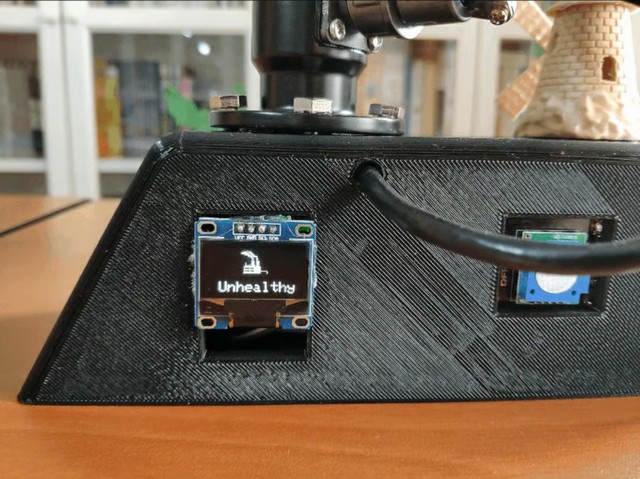
With an aim to help decrease air pollution, Kutluhan Aktar, a self-taught full-stack developer, has built a custom weather station that can predict the air quality index (AQI) of a region based on the current weather conditions. The developer used various low-cost equipment to build the weather station that can calculate the ground-level ozone concentration to predict air pollution in the environment. Let’s take a look at the details.
Developer Builds Low-Cost Weather Station to Predict AQI
Aktar, who recently pursued research papers on air quality and pollution, realized that current weather forecasting systems do not take ground-level ozone concentration into account when monitoring the weather of an environment. As a result, he went on to build a DIY weather station using relevant sensors and a Raspberry Pi 4 that can monitor the ground-level ozone concentration in an environment and predict the air quality index. You can watch it working on Aktar’s recent YouTube video.
For those unaware, ground-level ozone forms when nitrogen oxides (NOx) from sources like vehicle exhaust react with organic compounds in the presence of heat and sunlight. A high level of ozone concentration in the environment can cause breathing difficulties, set off asthma attacks, and damage our respiratory systems.
How Was It Made?
Due to these issues, Aktar built a homemade weather station to monitor and predict air pollution. He used an Arduino Nano 33 board to collect a data set from his balcony. He then sent the data to a Raspberry Pi 4 that was set up indoors over Bluetooth. Combining the data with the local air quality index, Aktar trained a TensorFlow Kera H5-based artificial neural network to predict outside air quality based on the current weather conditions and the ozone data.

The neural network data was converted to a C array using a custom-built application that runs on the Arduino Nano board, which sits inside a 3D-printed weather station alongside the ozone sensor and anemometer.
With the help of the aforementioned, the weather station can show the data on a screen that is being collected by the sensors. These include ozone concentration, wind speed, temperature, atmospheric pressure, and altitude. Other than this, the weather station can also generate a graphical representation, showing its prediction of the air quality. It can display the AQI prediction as “Good,” “Moderate,” or “Unhealthy.”

If you are a developer and are interested in making your own AQI-predicting weather station, Aktar has provided an in-depth guide, with a list of tools and software applications required for it. Check it out to build your own low-cost weather station at home. Also, do tell us your thoughts on this amazing project in the comments below!










